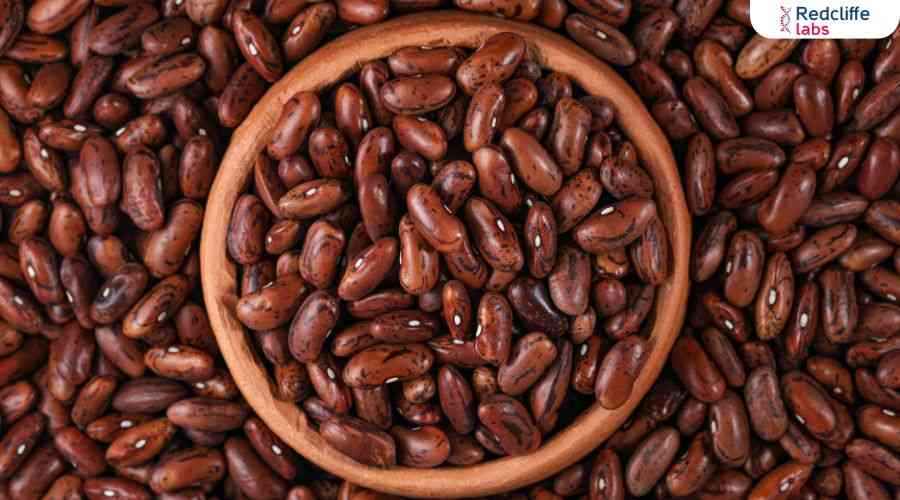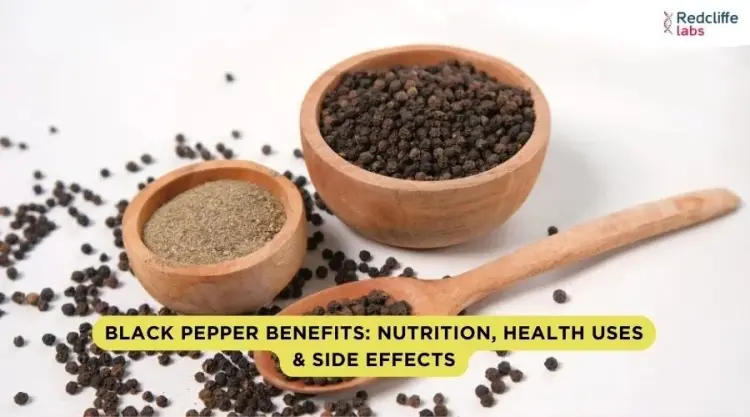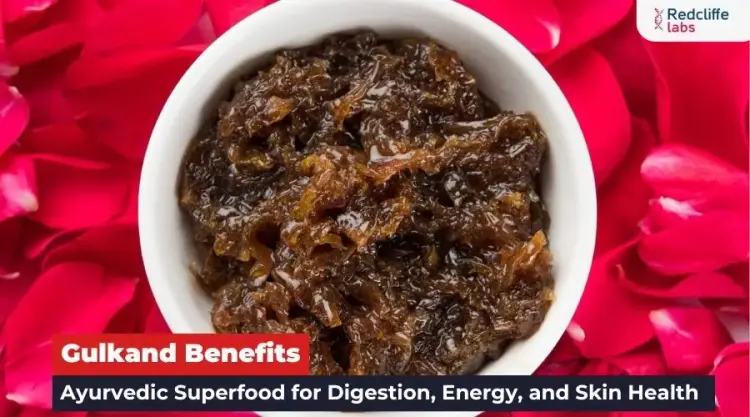Rajma protein per 100 grams: Nutrition Facts, Health Benefits, and More!

Medically Reviewed By
Prof. Ashok Rattan
Written By Sheena Mehta
on Oct 21, 2024
Last Edit Made By Sheena Mehta
on Jul 19, 2025

You must have often eaten rajma (red kidney beans), but are you aware of their health benefits?
Kidney beans are legumes that contain essential vitamins and minerals; protein in Rajma is a nutritional powerhouse.
In this blog, we will delve into the nutritional power of protein per 100 grams in red kidney beans and additional information that may take you by surprise. Let’s get started!
What are red kidney beans (rajma)?
Rajma is nutritious and a variety of the common bean (Phaseolus vulgaris). It is synonymous with kidney bean, snap bean, common bean, and French bean. It is native to Central America and South Mexico.
Kidney beans are regarded as an essential component of a well-balanced diet. Different variants of kidney beans include red kidney beans, black kidney beans, mottled kidney beans, and stripped kidney beans. You may also find white, cream, and purple kidney beans.
Red kidney beans contain proteins, vitamins, carbohydrates, and minerals. Let’s discover what protein in rajma per 100 gram offers:
Protein content of Rajma
Rajma is mainly preferred for its rich protein content. One hundred grams of cooked rajma can offer you about 8.7 grams of protein. It is an excellent plant-based protein source, making it worth it for vegans and vegetarians.
Rajma rice is a staple food of north India, especially in Punjabi households, it is much-loved and is relished with a mango pickle, mix pickle, papad, and chutneys to enhance its taste.
Comparing Rajma with Other legumes
Compared to other legumes, rajma (red kidney beans) has a high protein content, and while being a source of vitamins, minerals, and dietary fiber, it also promotes overall well-being.
- A 100-gram cooked chickpea offers about 8.9 grams of protein.
- A 100-gram cooked lentil offers about 9 grams of protein.
- A 100 gram of cooked black beans offers about 8.9 grams of protein.
Nutrition Facts about Boiled Rajma per 100 gram
Here is a breakdown of nutrition facts for a 100-gram serving of boiled rajma:
| Calories | 127 |
| Water | 67% |
| Protein | 8.7 grams |
| Carbs | 22.8 grams |
| Sugar | 0.3 grams |
| Fiber | 6.4 grams |
| Fat | 0.5 grams |
Beans are an excellent plant-based source of protein; therefore, they are called “poor man’s meat.” A 100-gram serving (3.5 ounces) of Rajma offers almost 8.7 grams of protein. This accounts for 27% of the total calorie content. Besides, other proteins, such as lectins and protease inhibitors, are also found in kidney beans.
Fiber content in kidney beans helps lower blood sugar levels and promote colon health. Kidney beans contain many bioactive plant compounds, such as isoflavones, phytohaemagglutinin, and phytic acid.
Kidney beans have a low glycemic (GI) index, making them beneficial, particularly for people with type 2 diabetes.
Additionally, kidney beans contain molybdenum, folate, copper, potassium, manganese, phosphorus, and vitamin K1, which support a healthy metabolism. This also encourages overall well-being.
8 Health Benefits of Rajma Protein per 100 gram :
Listed below are the health benefits of protein in 100 grams of rajma:
- Supports muscle growth
Consuming Rajma can offer immense health benefits. A 100-gram rajma contains 8.7 grams of protein, which helps in muscle growth and repair. This also makes rajma an excellent option for vegetarians or those seeking a plant-based diet.
- Aids in weight loss
It might surprise you, but you can manage your weight loss goals with rajma. Consuming a 100-gram protein-rich rajma can keep you feeling full for longer. Thus, it curbs overeating and contributes to weight management.
- Supports various bodily functions
Rajma (kidney beans) are a powerhouse of nutrition. Apart from catering to your protein needs, supporting weight loss, and muscle repair, it is responsible for several bodily functions. These include enzyme production, immune system function, and hormone regulation.
- Culinary Possibilities
Regarding benefits, red kidney beans (rajma) are versatile, allowing you to explore culinary possibilities. These include rajma hearty stews, rajma salads, rajma tacos, rajma curry, and rajma burgers.
- Supports bone health
Rajma is loaded with calcium and magnesium, key in maintaining strong and healthy bones. Besides, minerals and folate in rajma aid in bone structure and strength, joint health, and reduce the risk of osteoporosis and osteomalacia. .
- Heart Health
Rajma’s low-fat and cholesterol-free nature helps promote heart health. Potassium and magnesium are abundant in rajma, which helps regulate blood pressure levels. Additionally, fiber, antioxidants, and magnesium help lower the body's cholesterol levels and maintain blood pressure; thus, they contribute to heart health.
- Packed with nutrients
Rajma is packed with essential nutrients such as iron, magnesium, and folate, which support various bodily functions:
- Iron. It is essential for producing hemoglobin and preventing anemia. Our body cannot produce iron, and thus, foods such as rajma, a natural source of iron, are worth eating.
- Magnesium: Our body needs magnesium for muscle function and nerve signaling. It is essential for the electrolyte balance, metabolism, and bones.
- Folate is essential for DNA synthesis and cell division. Thus, it is important for pregnant women.
- Antioxidant properties
The antioxidant properties of rajma help combat oxidative stress in the body. This further minimizes the risk of chronic diseases, including heart disease and certain cancers.
So, don’t think twice and incorporate red kidney beans into your diet. Fuel your body with 100 grams of rajma, and savor the incredible benefits.
4 Different Methods to Incorporate Rajma into Your Diet:
Rajma is a versatile food that you can incorporate into your diet in numerous ways:
1. Rajma Curry
Rajma curry is a traditional dish that is delicious, nutritious, and easy to prepare. Cook kidney beans with onions, tomatoes, and spices. Serve it with rice or roti.
2. Rajma Salad
Rajma salad is delicious and protein-rich. Combine cooked rajma with diced cucumbers, tomatoes, and bell peppers. Add salt, pepper, olive oil, or lemon juice dressing.
3. Rajma Tacos
Try Rajma tacos. Prepare it with mashed rajma and spices. Serve in taco shells with toppings like avocado, salsa, and lettuce.
4. Rajma Burger
Have you tried rajma burger? Create a mashed rajma burger patty with breadcrumbs, spices, and vegetables. Grill or pan-fry it. Serve it with toppings for a satisfying meal.
Additionally, you can eat rajma burrito, rajma galouti kebab, rajma aloo cutlet patty, and other dishes with rajma filling in them for more protein intake.
Role of Rajma in Vegetarian and Vegan Diets
If you are a vegan or vegetarian, rajma is one of the best plant-based protein sources. Eating rajma can help meet daily protein requirements.
How much protein do you need every day?
Every adult should aim for about 46-56 grams of protein per day. However, the recommended dietary allowance (RDA) for protein varies depending on age, sex, and activity level.
Including rajma in your meals is beneficial. It helps achieve these protein goals, particularly when paired with other protein-rich foods.
Adverse Side Effects of Rajma
Kidney beans (rajma) may have several health benefits, but raw or inadequately cooked kidney beans are toxic. Some of its side effects include:
1. Phytohaemagglutinin is high in red kidney beans. Consuming raw kidney beans can cause diarrhea, vomiting, and sometimes hospitalization.
It is recommended to soak the beans first and then cook them. It removes toxins and makes them safe and nutritious to eat.
2. Antinutrients in raw kidney beans reduce their nutritional value. Antinutrients such as phytic acid, protease inhibitors, and starch blockers are a serious concern.
- Phytic acid (phytates) decreases the absorption of zinc, iron, calcium, and magnesium. Besides, mineral-binding and enzyme-blocking effects can cause digestive problems.
- Protease inhibitors, or trypsin inhibitors impair protein digestion. Besides, it can cause liver problems.
- Starch blockers and alpha-amylase inhibitors do not let dietary starch and other complex carbohydrates digest properly.
3. Flatulence and bloating
Raw or inadequately cooked rajma needs to be avoided. Additionally, they contain antinutrients that can cause gas, bloating, diarrhea, and flatulence in some people/.
Conclusion
With approximately 8.7 grams of protein per 100 grams, rajma seems a strong contender among legumes. It has a rich fiber content, essential vitamins and minerals, and antioxidant properties, giving you all possible reasons to call it a superfood.
To meet your protein needs, incorporate rajma into your daily diet, whether in a traditional curry, tacos, or salad.
Next time, consider rajma for its rich nutrient profile whenever you plan your meals. It offers a wide range of benefits for your health and well-being.
Leave a comment
1 Comments
Nilesh Laliwala
Apr 27, 2025 at 11:29 AM.
Informative,
Myhealth Team
Apr 29, 2025 at 9:47 AM.
Thankyou! We are glad you have liked the information.



